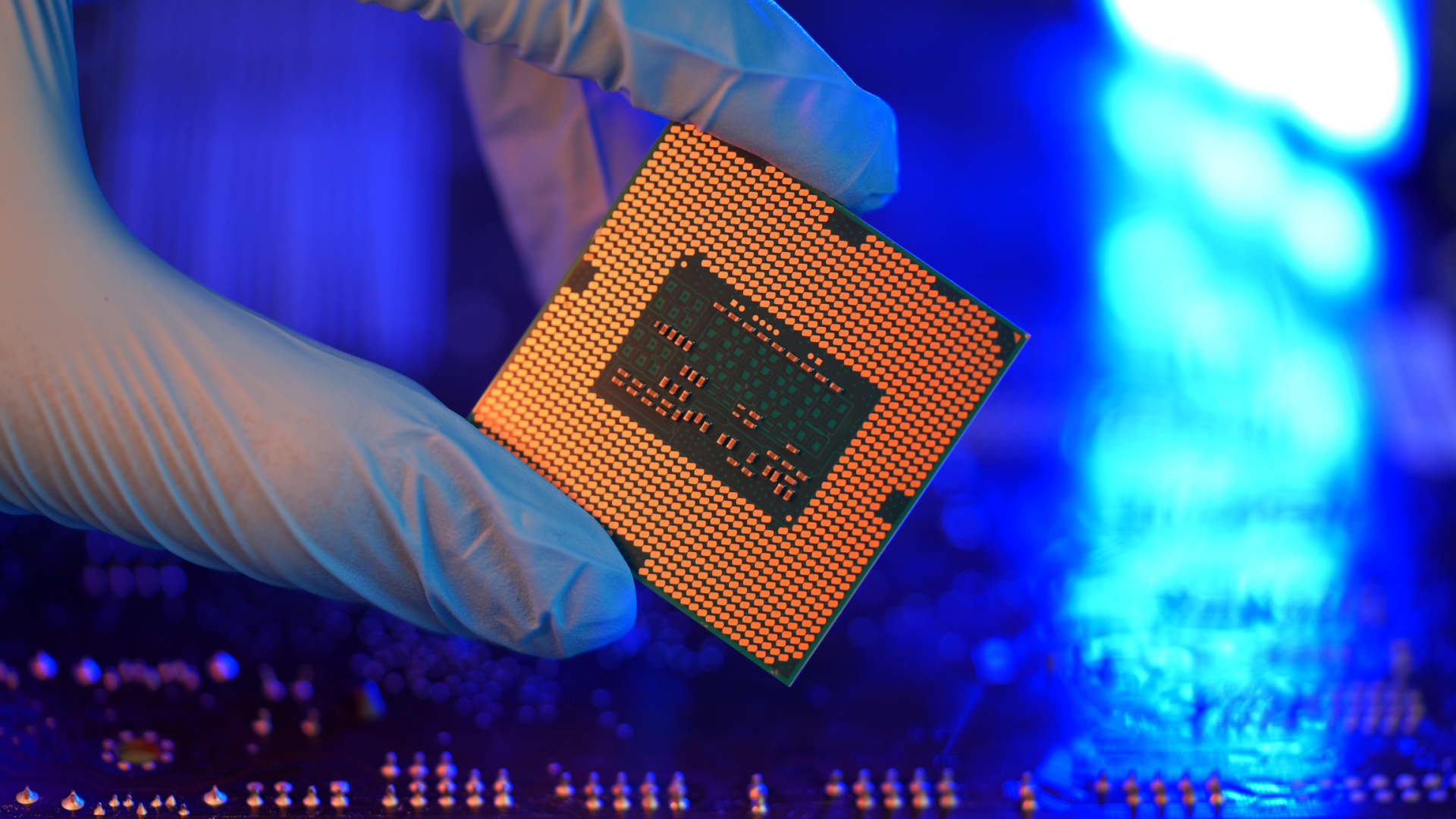- - The semiconductor shortage that affected everything from cars to games consoles during the height of the Covid-19 pandemic has turned into a chip glut in some parts of the market.
- - It comes after companies began to stockpile chips to build up inventories, but then the economy slowed down and demand for products like smartphones and laptops evaporated.
- - Memory chipmakers Samsung and its rivals SK Hynix and Micron have had a tough time as a result.
Semiconductors are tiny components that are integral to a slew of products including refrigerators, cars, smartphones and LED bulbs.
The Covid-19 pandemic caused huge disruption in the supply chains and production of chips, as consumers stuck at home went mad for products like PCs and smartphones.
This boosted demand for semiconductors such as the memory chips made by South Korean firms Samsung, SK Hynix and Micron
There was also increased demand for less-advanced chips required for processes like power management in devices.
It led to a widespread shortage of products such as games consoles and even components for washing machines, which continued through the first half of 2022. There was also a lack of semiconductors that go into cars, leading to a drop in the production of vehicles from major automakers.
While the supply and demand dynamics for some chips have since become more balanced, in other areas, the chip shortage has turned into a glut.
Memory chip oversupply
Two types of chips are in oversupply right now: NAND and DRAM memory. These go into devices like laptops and also servers in data centers.
The glut came after companies began to stockpile chips amid the shortage to build up inventories.
But then the economy slowed down.
Demand for products like smartphones and laptops has dropped off in a big way — particularly as many people bought them during the pandemic.
“So, the makers of these end products stopped ordering chips and instead focused on selling through the inventory they already had,” Peter Hanbury, partner in the telecoms, media and technology practice at Bain & Company, told CNBC.
“This led to a strong ‘bullwhip’ effect for the semiconductor markers further back in the supply chain where sky high demand during the chip shortage suddenly dried up as end markets stopped ordering chips and instead focused on selling through the inventory they already had.”
Not all types of semiconductors are in oversupply, however, with demand for chips from the auto sector remaining strong.
Hanbury said that some chips made for specific purposes are not easy to exchange for other semiconductors, and so “their lead times and prices are improving but remain quite high.”
From profit boost to income plunge
The pandemic-induced shortage of semiconductors helped boost chip makers’ profits as prices jumped. This included Samsung, the world’s largest memory chip manufacturer.
This year, however, Samsung and its rivals SK Hynix and Micron, have had a tough time.
Samsung on Thursday said operating profit for the second quarter plunged 95% year-on-year. Meanwhile, SK Hynix swung to a loss in the second quarter versus a profit in the same period last year.
Taiwan Semiconductor Manufacturing Company, the world’s largest chipmaker, said last week that net income for the second quarter fell 23.3% from a year ago. It was its first quarterly profit decline in 4 years.
Looking ahead, the PC market appears weak, which is likely to impact Samsung, SK Hynix and Micron.
For TSMC, the global smartphone market — a major revenue driver — is also under pressure.
“The smartphone market is still the biggest part of TSMC’s revenue. That part is still not seeing any meaningful pick up,” Sze Ho Ng, an analyst at China Renaissance Securities, told CNBC via phone.
Chip balance soon?
In an effort to boost the price of chips and reduce supply in the market, the major memory chip firms have announced production cuts.
Samsung said it expects global demand to recover in the second half of the year, and others have echoed a similar sentiment.
TSMC, however, said last week that it expects “continued inventory adjustment” from customers.
“After this year’s correction, I think there will be a second-half growth scenario for TSCM, but how strong that will be will be dependent on the macro environment,” Ng said.
Ultimately, recovery for these firms will depend on whether demand picks up for end products like consumer electronics, but that’s related to a macroeconomic recovery which looks far from certain.

How the world went from a semiconductor shortage to a major glut
Some of the world's biggest chipmakers are taking a hit as the semiconductor shortage of the Covid-19 pandemic turns into a glut.


/cloudfront-us-east-2.images.arcpublishing.com/reuters/7OGX5YHKAZNLBLZX2ABWMDOKBQ.jpg)